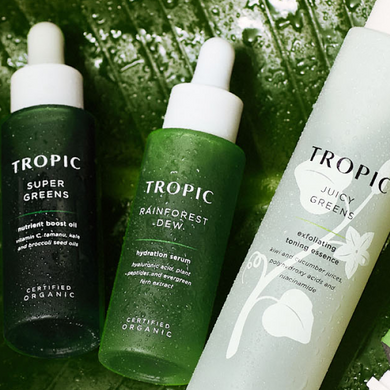Body hair is completely normal, and what you do with it is totally your decision. But if you opt to remove unwanted hair, it’s important to figure out what’s best for you and your body.
Whether you love it or loathe it, we’ve all got body hair. Inherited from our hairy ancestors, it’s designed to keep us warm and protect our skin. So, whether we remove it or not just boils down to personal preference.
With so many hair removal methods on the market, it can be difficult to know what’s right for you. So, we asked Dr Kay – a family GP, cosmetic doctor and skincare enthusiast – to talk us through the pros and cons of each.
Shaving
Quick, convenient and cheap, it’s no wonder shaving is so popular. Although it wouldn’t be Dr Kay’s chosen method of hair removal, its fuss-free credentials bring users back time after time.But there’s much more to a good shave than a few swipes of the razor. Dr Kay suggests that technique is key if you want results. This involves using a fresh blade, replacing it regularly (usually after 10 uses), shaving against the direction of hair growth, and employing a gentle, gliding motion.
She also adds that you should “never dry shave. Instead, use something to add slip, like a shaving gel or coconut oil, and follow through with a moisturiser,” she says. Tropic’s Look Sharp Sensitive Shave provides the perfect prep for a smooth, close shave. Containing aloe vera juice to hydrate and soothe your skin, and golden jojoba oil for great razor glidability, skin is left feeling and smelling amazing.
Plucking and epilating
While plucking uses handheld tweezers to manually remove hairs, epilators are equipped with mechanically operated tweezers. According to Dr Kay, plucking and epilating can be used on any hair type, but it “depends on how large the area of hair you need to remove is, and on your pain threshold.”
She says plucking is “best for removing stray hairs like eyebrows, chin and facial hair,” while epilating is more suited to less sensitive areas, like the legs. Epilating can be painful to begin with, but this ouch-factor should decrease over time as your hair becomes thinner and less regrowth appears.
Threading
“Threading is suitable for everyone,” says Dr Kay. The process involves no skin-aggravating chemicals or products. Instead, a therapist takes a thin thread, winds it tightly, and uses it to grab unwanted hairs line by line. “It’s a similar sensation to plucking and very popular for shaping the eyebrows and removing upper lip/chin hair.”
Depilatory creams
Depilatory creams, otherwise known as hair removal creams, are “suitable for most hair types,” says Dr Kay. Easy and pain-free, the creams contain alkaline chemicals that safely dissolve the keratin (the protein structure) in your hair. Then, you simply wash off the cream along with the hair.
“Hair is dissolved and removed cleanly from the hair follicle, giving a lower risk of ingrown hair,” says Dr Kay. However, some creams might cause a reaction, so it’s always best to do a patch test 24 hours before.
Waxing
“Waxing is very popular as it gives you complete hair removal, and that baby-soft smooth skin feeling afterwards. You just have to get over the pain,” says Dr Kay. Waxed hair usually takes longer to grow back and is suitable for most skin types.
Although there are lots of different waxes available, including at-home packages, Dr Kay recommends always visiting a professional. “The most important thing is the skill of the aesthetician,” she says. “Someone skilled at removing the hair will not only make it less painful but reduce the likelihood of ingrown hairs and skin irritation afterwards.”
Bleaching
Okay, you’ve rumbled us. Bleaching isn’t technically a hair removal method, but it’s a way of disguising your hair by chemically stripping its colour.
If you’re allergic or sensitive to chemicals, this probably isn’t the method for you. As Dr Kay explains, “you will have to do a test patch first, and if you do notice any redness or irritation – it’s a no go.”
Intense Pulse Light (IPL)
IPL machines direct broad-spectrum light at the hair root, to help permanently reduce hair growth and remove melanin. Unfortunately, IPL isn’t suitable for those with a deeper skin complexion, according to Dr Kay. Since IPL targets melanin pigments (which are more prominent in darker skin), the light could be redirected into skin cells and cause discolouration.
But it looks like IPL might have had its moment in the sun anyway. “It’s less popular now that there is a newer technology that works and avoids burns and pigmentation problems”, says Dr Kay.
Laser hair removal
Laser hair removal kills off the hair by using lasers. Unlike IPL, laser hair removal uses a single spectrum light to target the melanin pigment in the hair follicle. “This means that it’s best suited to someone who has a pale skin tone but dark hair,” says Dr Kay.
Electrolysis
There are two types of electrolysis: galvanic and thermolytic. Galvanic electrolysis uses an electrical current to permanently destroy the hair follicle, while thermolytic electrolysis uses heat to do the same thing.
“If you’re looking for a permanent way of removing pesky hair, then electrolysis may be the answer,” she says. “Especially troublesome facial hair and excessive hair growth triggered by hormones (hirsutism).”
The takeaway
So, there you have it, a rundown of the most popular hair removal solutions around. You might have to trial and test a few methods before you find your favourite, but there’s an option for everyone. Oh, and don’t forget: your hair, your choice!
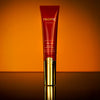 Skincare
Skincare
 Gifts
Gifts
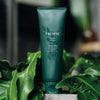 Men's
Men's
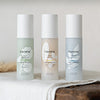 Bestsellers
Bestsellers
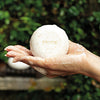 Body Care
Body Care
 Sun Care
Sun Care
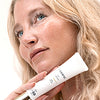 Makeup
Makeup
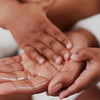 Mama & Baby
Mama & Baby
 Hair Care
Hair Care
